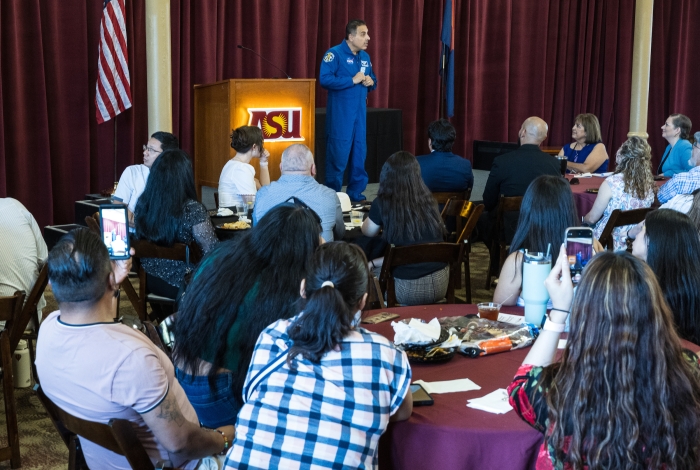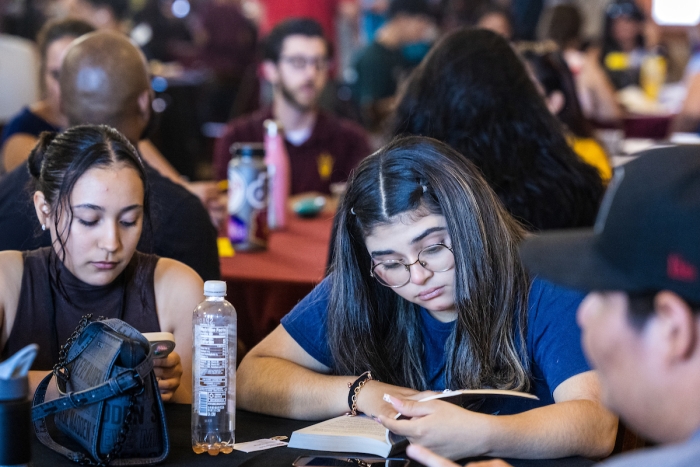Children of seasonal workers explore STEM subjects at ASU summer academy
Astronaut José Hernández tells high schoolers to dream big
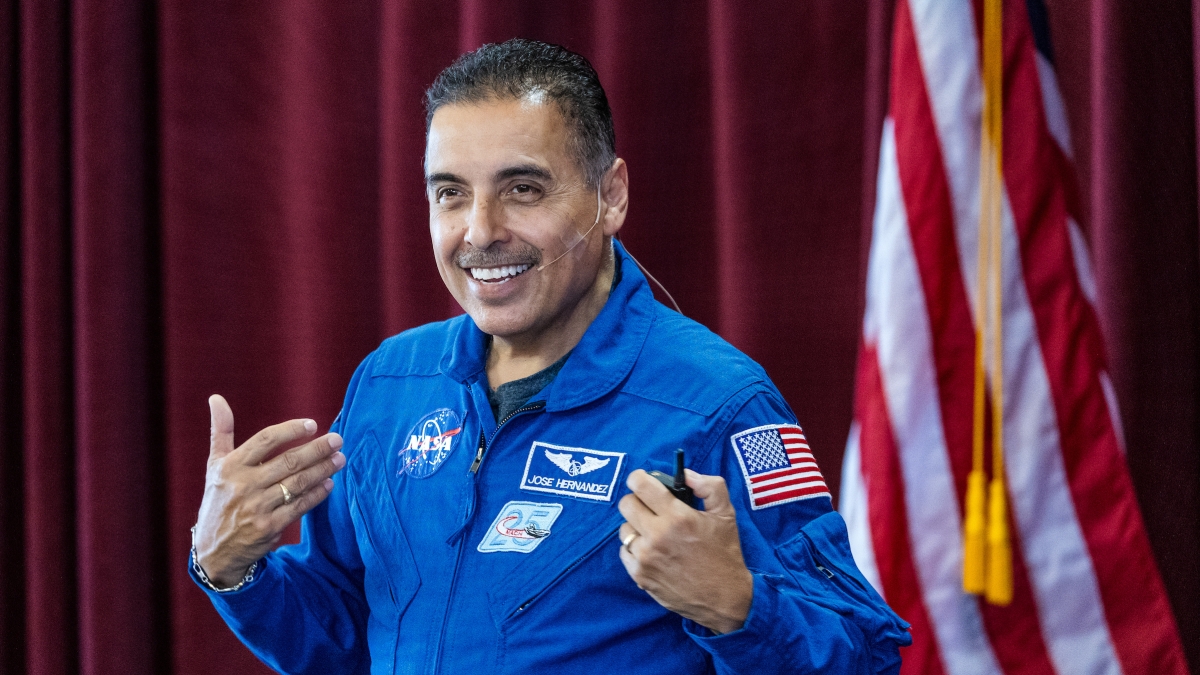
Former NASA astronaut José Hernández delivers his inspirational life story to 70 high school students, whose family members are seasonal migrant workers, at the conclusion of ASU's weeklong Migratory Student Summer Academy. Photo by Charlie Leight/ASU News
José Hernández looked at the 70 faces in front of him and knew what they were thinking.
Hernández, a former NASA astronaut, was speaking to students who had gathered at Arizona State University for the weeklong Migratory Student Summer Academy, an Arizona Department of Education-funded enrichment program that encourages high-school-aged children of migrant seasonal farmworkers to think about futures in STEM (science, technology, engineering and math).
Hernández knew what they were thinking because he was once one of them, the son of a migrant farming family from Mexico who spent much of his childhood on the “California circuit,” picking strawberries and cucumbers.
A career in STEM, much less becoming an astronaut, seemed like a fantasy world.
“There was a minimization of what I wanted to do,” Hernández said. “It was (a condescending), ‘That’s nice. Look at him. He wants to be an astronaut. Good for him.’”
Asked if the dismissive response had to do with him being Hispanic or because he was picking fruit, Hernández gave a one-word reply: “Both.”
But on this Friday afternoon in Old Main, as Hernández spoke to the ninth-to-12th-grade students and their parents in English and Spanish, he told them they didn’t have to settle for the life they’re expected to lead.
“Society as a whole does not give them the license, the expectation that they can do these things,” Hernández told ASU News. “But my forte is inspiring kids that look like me and speak like me and come from perhaps similar socioeconomic backgrounds.”
Students at the summer academy, which is hosted by ASU’s School of Transborder Studies, lived in campus dormitories for the week and received a widespread introduction to STEM subjects at university labs. They visited the School of Earth and Space Exploration and saw a duplicate of the 2020 Mars Perseverance rover, which includes an ASU-led mast-mounted camera system that can take 3D images and videos.
They went to the Desert Botanical Garden in Phoenix to better understand the connection between climate and geography.
They did experiments with electricity, learned about mosquitoes and bees, and took a trip to the veterinary school at Midwestern University in Glendale.
“The main outcome that we’re hoping for is to get them excited about STEM careers,” said Gilberto Lopez, an assistant professor in the School of Transborder Studies.
In addition, the academy provides the students instruction on how to navigate college entrance requirements and/or determine whether attending junior college is the best option.
“I came from this community (migrant farmworkers), and your world is very limited,” Lopez said. “Maybe someone in your family has finished high school, but no one has gone to college. It’s a world that just doesn’t exist. No one even knows how to direct you. So we want to make sure that they at least know there’s something out there for them, and that there’s so many things they can do besides working with their bodies.”
Because of COVID-19, Renee Cardoza Leon attended an online version of the academy in 2021 while a student at Gila Ridge High School in Yuma. Still, the week changed her life.
“Before, I wasn’t sure what I wanted to do. I had no idea,” said Leon, now an ASU sophomore majoring in computer science with a concentration in software engineering. "I thought I was just going to play it safe and get a job out of high school or go to community college. I learned that ASU is one of the top schools in engineering, and learning about programming caught my (attention).
“It opened my eyes about going to ASU and getting a career. It made me think bigger.”
Kimberly Flores, a junior at Yuma High School, said this year’s camp has made her consider her career options. She has long desired to be a psychologist, and still plans to pursue that path, but after visiting Midwestern University’s veterinarian school and meeting a horse named Tilly, she’s considering a life taking care of animals.
Flores said she’s talked to other students at the academy, and they all say the same thing: They are now considering a career in STEM fields.
“They didn’t think they had an opportunity like this in front of them,” Flores said. “Their eyes have been opened.”
Hernández, the CEO of Tierra Luna Engineering in Stockton, California, told the students that their dreams have to be accompanied by a large dose of perseverance. He was rejected 11 times by NASA before being selected as part of the 19th class of astronauts in 2004. Five years later, he was a mission specialist on board the space shuttle Discovery.
“You have to enjoy the journey to your destination,” he said, “because the journey is about 80–90% of your time and effort. And if you’re not enjoying the journey, chances are you probably picked the wrong destination.”
Hernández listed five ingredients for success that he received from his father: Define your purpose in life; recognize how far you are; draw yourself a roadmap; prepare accordingly; and develop a work ethic “second to none.”
“Sometimes, it’s not enough to just meet the minimum requirements,” he said. “I got rejected 11 times because there were 12,962 people that also met the minimum requirements. So you have to ask yourself, ‘What do I have to do next?’”
Hernández hopes his speech — and his journey — will inspire the students to follow his lead.
“When I give these (speeches), it's more of an empowering effect that I have on the kids,” Hernández said. “I challenge them. I’ll tell them, ‘If I was able to do it, given what I just told you, why can't you?’”
More Science and technology
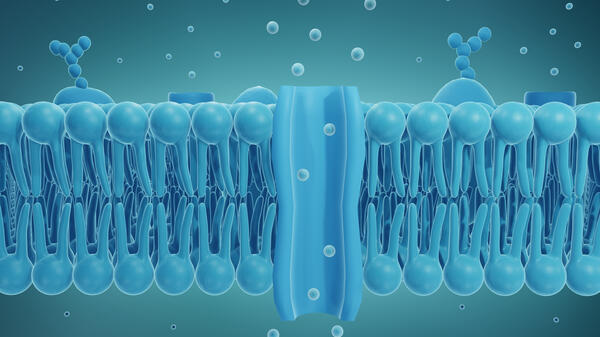
Chilling discovery: Cold-sensing protein may pave the way for safer pain relief
For millions of people worldwide who live with chronic pain, the only treatments currently available often rely on opioids, which carry the risks of addiction and overdose. However, new research…
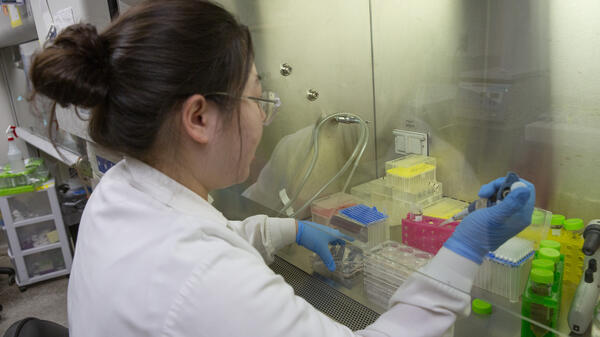
Harnessing benefits of stem cells for heart regeneration
Mehdi Nikkhah, an associate professor of biomedical engineering in the Ira A. Fulton Schools of Engineering at Arizona State University, and his collaborators at Mayo Clinic in Arizona have been…
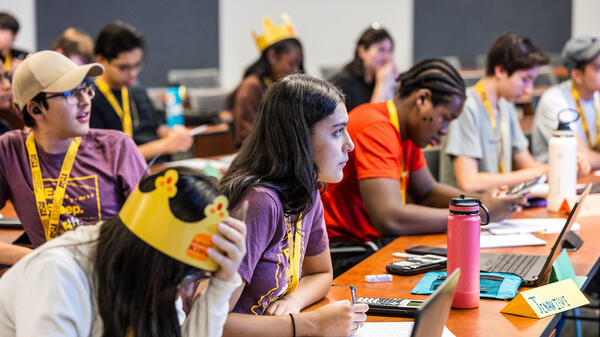
Newly accredited ASU summer program opens up STEM opportunities for underrepresented students
It was Monday afternoon. Spotify was playing pop music in the background and the instructor stood behind a lectern wearing a paper Burger King crown. It is not a scene one would expect in a college…
